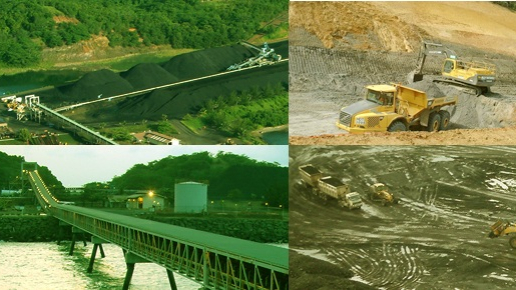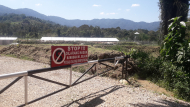Company – On record
This profile is no longer actively maintained, with the information now possibly out of dateBankTrack

Company – On record
This profile is no longer actively maintained, with the information now possibly out of dateBankTrack
What must happen
Swiss bank Credit Suisse, along with China Investment Corporation and the China Development Bank, have been heavily involved in bankrolling the corporation. J.P Morgan Chase and Deutsche Bank have also been identified as key underwriters for Bumi Resources, despite the company’s poor financial performance.
We therefore call on all banks, financiers and shareholders of Bumi Resources to use their influence with this company and their subsidiaries. They should cancel their loans and commit to issue no more loans or to purchase no more shares or bonds in Bumi Resources or any company associated with it, and to take steps toward public divestment from these companies.
| Sectors | Coal Mining |
| Headquarters |
|
| Ownership |
The top five shareholders are: Credit Suisse, 23.2%, PT Dama Reki Energi, 6.3%, Standard Chartered Bank, 4.8%, Long Haul Holdings, 3.5%, Raiffeisen Bank International, 3.5%. The rest of the shares (58.7%) is owned by other investors, each share lower than 3.5%. |
| Subsidiaries |
|
Bumi Resources is currently the most significant coal producer in Indonesia with 2013 production at 80 million tonnes. It owns the Kaltim Prima Coal project in East Kalimantan that produces around 50 million tonnes a year. Bumi operates mines through four companies: PT Arutmin Indonesia, PT Kaltim Prima Coal (KPC), PT Pendopo Energy Batubara and PT Fajar Bumi Sakti. Besides Kaltim Prima it has several subsidiaries: Arutmin, Bumi Resources Minerals, Pendopo Energi Batubara and Fajar Bumi Sakti.
Environmental and climate impacts
Impact on human rights and communities
The human impact of the KPC project has been stark. Villages such as Segading, Sepaso and Sekerat in the Bengalon mining concession have experienced serious problems as a result of the mining. While families of those directly employed by the mine have benefitted from jobs, the communities as a whole have had to deal with significant water pollution, loss of land and other problems.
Villagers report serious dust and noise disruptions from blasting, which occurs frequently without any prior announcement. The blasting has shattered window panes and caused cracks in the buildings. Children wake up crying in shock and fear from nighttime blasting.
The village of Segading is home to a community of indigenous people called the Dayak Basap. When the KPC coal mining company first arrived in the region, the members of community decided to agree to move from their ancestral land in order to take advantage of the benefits the mining company promised. Unfortunately for the Dayak Basap, not only did these benefits fail to materialise but, as the mine expanded, the community was then forced to move twice more against their will. Currently, the leader of the village, Gagay, is fighting to prevent the KPC mining company from forcibly displacing them for a fourth time to a plot of land that is much smaller than the land they are being told to leave.
The older Sangatta mine has also caused a lot of damage since it became operational in 1992. For example, in 2001, farmers from the village of Kabojaya near the Sangatta pit protested the fact that they could no longer use the local water supply or grow crops as a result of pollution from the mine. Protests against KPC from farming communities led the company to hire Group 4 Securicor (now G4S) to provide security.
KPC has also been associated with human rights abuses according to a report released in August 2014 by JATAM, Indonesia’s Mining Advocacy Network. According to interviews with local communities and other research undertaken by JATAM, the KPC mine has had the following impacts:
- KPC has been intimidating people to force them to move, and the local municipality has stopped providing health workers or teachers to the village. Villagers from Keraitan and other relocation sites report having insufficient land to cultivate or hunt.
- Villagers living around the mining operation have no access to electricity despite the fact that KPC has been mining the area for more than 20 years and have installed 18.9 megawatt of thermal generation capacity.
- Communities have lost land to the mining pits, and people have been offered meager amounts of compensation for lost land, fruit trees and other resources.
- Villagers report that there have been no aid or assistance from KPC or the government of East Kutai Regency. “We feel that KPC wants to drive us out of our village, our homeland,” said one interviewee.
One study supported by the KPC mining company and funded by the World Bank found that even the small amount of money received in compensation and jobs has gone almost completely to the men, with local women seeing almost no benefit and, in cases where they lose their farming role, becoming economically dependent on their husbands
Impact on climate
As a low-lying country with a vast coastline, Indonesia is extremely vulnerable to climate change. More than 70 percent of the country’s population - 274 million, in total - lives along the coast, scattered across thousands of islands. This distribution means people will be seriously affected by sea level rise. Jakarta, the capital, already incurs damages of more than $1.5 billion each year from flooding.
Farmers across the country are experiencing delays in crop harvesting, declining crop yields and quality of produce, increasing incidence of pests and diseases, and widespread livestock mortality. Indonesia’s fishing industry, one of the world’s largest producers, also faces serious challenges as rising sea temperatures decimate fisheries.
Nonetheless, Bumi Resources continues to develop new mining resources. Staying true to its corporate coals, which include expanding “mine exploration, especially in coal,” Bumi continues to produce nearly one hundred million tons of coal annually.
Bumi’s sustainability strategy and reports do not address scope 3 emissions - emissions for which the company is indirectly responsible for, up and down its value chain. To cut its carbon footprint, Bumi has focused strictly on in-house emissions, rather than ramping down coal production. The company’s financial statements rarely even mention climate change.
Impact on nature and environment
The KPC concession areas cover a vast 90,000 hectares, encompassing several villages, and border on the East Kutai National Park, which has been compromised by the presence of the mines. By 2008, an estimated 75 percent of the forest area supposedly "protected" as part of the national park had already been destroyed, a process exacerbated by the presence of mining companies.
KPC has also been associated with massive environmental contamination, according to a new report released in August 2014 by JATAM, Indonesia’s Mining Advocacy Network. According to interviews with local communities and other research undertaken by JATAM the KPC mine has had the following impacts:
- Wastewater from KPC’s mines is frequently discharged untreated into the Sangatta and Bengalon Rivers, contaminating river water that is used by villages downstream and killing fish and other aquatic organisms. Rivers are contaminated with heavy metals and suspended solids, and mine drainage have caused water to become either acid or alkaline.
- Studies have shown that the Sangatta River is especially contaminated with heavy metals, with lead concentration reaching 18 times the regulated level. According to a researcher from the Agricultural University of Sangatta, the river water is no longer safe to be consumed or used due to the risk of skin disease and carcinogenicity. Communities living along the Keraitan River now have to buy water for their daily needs as the river water is contaminated.
- The mine has destroyed wetlands, forests and agricultural soils with high water retention capacity, leading to exacerbated flooding downstream. KPC’s mining operation has destroyed the soil over an area of 90,000 hectares, which has radically altered the hydrology of the entire Sangatta River system. Villagers report frequent flood events affecting at least three villages and a main road thoroughfare in the region. Villagers report that flooding can persist for a week and that they have received no aid or compensation from the government or KPC.
- Indigenous Basap Dayak people have also reported massive fish kills in the Keraitan River due to contamination by KPC pit B. The dead fish used to be edible species traditionally caught by the community, and their depletion has resulted in economic and nutritional losses.
Other impacts
Bumi plc and the London Stock Exchange.
The firm was established by the billionaire Bakrie brothers. In 2010,
Nat Rothschild, heir to the international Rothschild banking dynasty,
created Bumi plc, then called Vallar, and listed the shell company on
the basis that investors would be attracted by the proposition of
investing in Indonesian coal through a 'safe' investment vehicle listed
in London. The experiment was initially a great success as it raised
GBP707 million, money that ended up financing the two big Indonesian coal
companies: Bumi Resources and Berau Coal. The deal also gave the
Indonesian Bakrie family's coal empire access to UK investment.
A boardroom falling out between Rothschild and the Bakrie family,
ostensibly over a lack of corporate governance standards at the
Indonesian firms revealed how lax the listing criteria had been allowed
to become. Angry exchanges at the company's AGM and exchanges of
allegations of corruption and misconduct eventually led to the freezing
of Bumi's shares and a collapse in Bumi plc's share price, making a
mockery of the supposed "safe" status of Bumi plc as a FTSE 250 company
holding a premium listing in London. But all the chatter about this
actually misses the real, far bigger scandal of Bumi plc, the GBP707
million that ended up financing highly damaging coal in East Kalimantan.
Video links
2015
2015-01-01 00:00:00 | Coal production 2014
In 2014 Bumi resources produced 84 million tonnes of coal, according to its annual report 2014.

